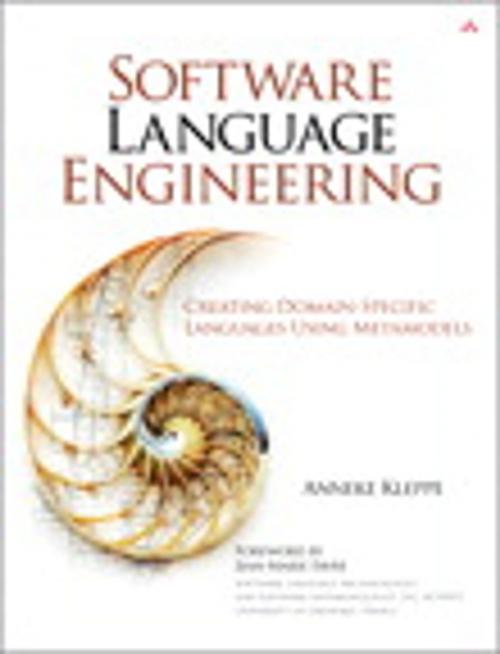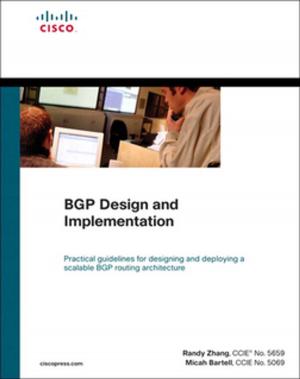Software Language Engineering
Creating Domain-Specific Languages Using Metamodels
Nonfiction, Computers, Programming, Systems Analysis| Author: | Anneke Kleppe | ISBN: | 9780321606464 |
| Publisher: | Pearson Education | Publication: | December 9, 2008 |
| Imprint: | Addison-Wesley Professional | Language: | English |
| Author: | Anneke Kleppe |
| ISBN: | 9780321606464 |
| Publisher: | Pearson Education |
| Publication: | December 9, 2008 |
| Imprint: | Addison-Wesley Professional |
| Language: | English |
Software practitioners are rapidly discovering the immense value of Domain-Specific Languages (DSLs) in solving problems within clearly definable problem domains. Developers are applying DSLs to improve productivity and quality in a wide range of areas, such as finance, combat simulation, macro scripting, image generation, and more. But until now, there have been few practical resources that explain how DSLs work and how to construct them for optimal use.
Software Language Engineering fills that need. Written by expert DSL consultant Anneke Kleppe, this is the first comprehensive guide to successful DSL design. Kleppe systematically introduces and explains every ingredient of an effective
language specification, including its description of concepts, how those concepts are denoted, and what those concepts mean in relation to the problem domain. Kleppe carefully illuminates good design strategy, showing how to maximize the flexibility of the languages you create. She also demonstrates powerful techniques for creating new DSLs that cooperate well with general-purpose languages and leverage their power.
Completely tool-independent, this book can serve as the primary resource for readers using Microsoft DSL tools, the Eclipse Modeling Framework, openArchitectureWare, or any other DSL toolset. It contains multiple examples, an illustrative running case study, and insights and background information drawn from Kleppe’s leading-edge work as a DSL researcher.
Specific topics covered include
- Discovering the types of problems that DSLs can solve, and when to use them
- Comparing DSLs with general-purpose languages, frameworks, APIs, and other approaches
- Understanding the roles and tools available to language users and engineers
- Creating each component of a DSL specification
- Modeling both concrete and abstract syntax
- Understanding and describing language semantics
- Defining textual and visual languages based on object-oriented metamodeling and graph transformations
- Using metamodels and associated tools to generate grammars
- Integrating object-oriented modeling with graph theory
- Building code generators for new languages
- Supporting multilanguage models and programs
This book provides software engineers with all the guidance they need to create DSLs that solve real problems more rapidly, and with higher-quality code.
Software practitioners are rapidly discovering the immense value of Domain-Specific Languages (DSLs) in solving problems within clearly definable problem domains. Developers are applying DSLs to improve productivity and quality in a wide range of areas, such as finance, combat simulation, macro scripting, image generation, and more. But until now, there have been few practical resources that explain how DSLs work and how to construct them for optimal use.
Software Language Engineering fills that need. Written by expert DSL consultant Anneke Kleppe, this is the first comprehensive guide to successful DSL design. Kleppe systematically introduces and explains every ingredient of an effective
language specification, including its description of concepts, how those concepts are denoted, and what those concepts mean in relation to the problem domain. Kleppe carefully illuminates good design strategy, showing how to maximize the flexibility of the languages you create. She also demonstrates powerful techniques for creating new DSLs that cooperate well with general-purpose languages and leverage their power.
Completely tool-independent, this book can serve as the primary resource for readers using Microsoft DSL tools, the Eclipse Modeling Framework, openArchitectureWare, or any other DSL toolset. It contains multiple examples, an illustrative running case study, and insights and background information drawn from Kleppe’s leading-edge work as a DSL researcher.
Specific topics covered include
- Discovering the types of problems that DSLs can solve, and when to use them
- Comparing DSLs with general-purpose languages, frameworks, APIs, and other approaches
- Understanding the roles and tools available to language users and engineers
- Creating each component of a DSL specification
- Modeling both concrete and abstract syntax
- Understanding and describing language semantics
- Defining textual and visual languages based on object-oriented metamodeling and graph transformations
- Using metamodels and associated tools to generate grammars
- Integrating object-oriented modeling with graph theory
- Building code generators for new languages
- Supporting multilanguage models and programs
This book provides software engineers with all the guidance they need to create DSLs that solve real problems more rapidly, and with higher-quality code.















